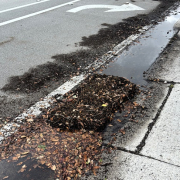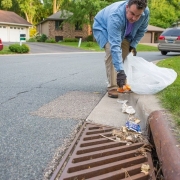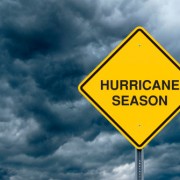Three Groups Working Together
Within Lake Worth Drainage District (LWDD), flood control is a shared responsibility and achieved through an interconnected, 3-tiered drainage system governed by 3 unique groups of people. Through communication and coordination, these 3 groups can provide effective flood control. The groups are identified as:
- Neighborhood drainage systems operated by property owners or residential associations
- Secondary drainage systems operated by LWDD or municipalities
- Primary drainage system operated by the South Florida Water Management District (SFWMD)
When it rains, water will flow into stormwater ponds and, if needed for flood control, out through the pond’s discharge control structure into the LWDD canal system. Excess water in LWDD canals will then flow into the primary SFWMD system for potential flood control discharge. Most of the time this drainage occurs unnoticed by the average individual.
Water managers in charge of primary and secondary systems are continually monitoring the weather and canal levels to proactively respond to changes in canal elevations. In anticipation of a heavy rainfall event, water managers will make operational adjustments to maintain appropriate water elevations for flood control. Additionally, throughout the year routine canal maintenance is conducted to provide unobstructed flow in the canal channel and access along the canal rights-of-way. The inspection of control structures, pumps and other infrastructure is also conducted, and repairs or replacements are made.
Property owners and residential associations have a similar role regarding their neighborhood drainage system. They must maintain their drainage infrastructure to ensure that inlets, storm drains, pipes, and discharge control structures are free of potential blockages and working as designed, thus maintaining the flow of stormwater away from their property. An annual inspection of the drainage infrastructure should be made, and repairs should be completed before the start of Hurricane Season on June 1.
Some neighborhood drainage systems have operable discharge controls structures and can request permission from LWDD to open their structure prior to a severe storm. This will provide additional onsite storage capacity within the stormwater pond. Guideline for the operation of neighborhood operable discharge control structures can be found at www.lwdd.net/storm-response.
Coordinating efforts and working together we can provide effective flood control.






